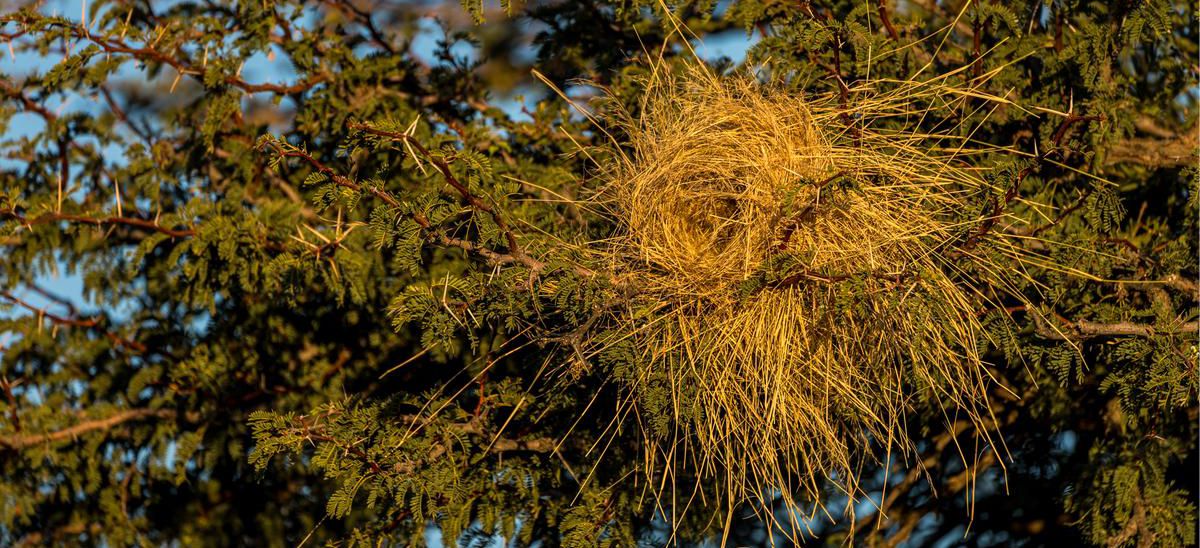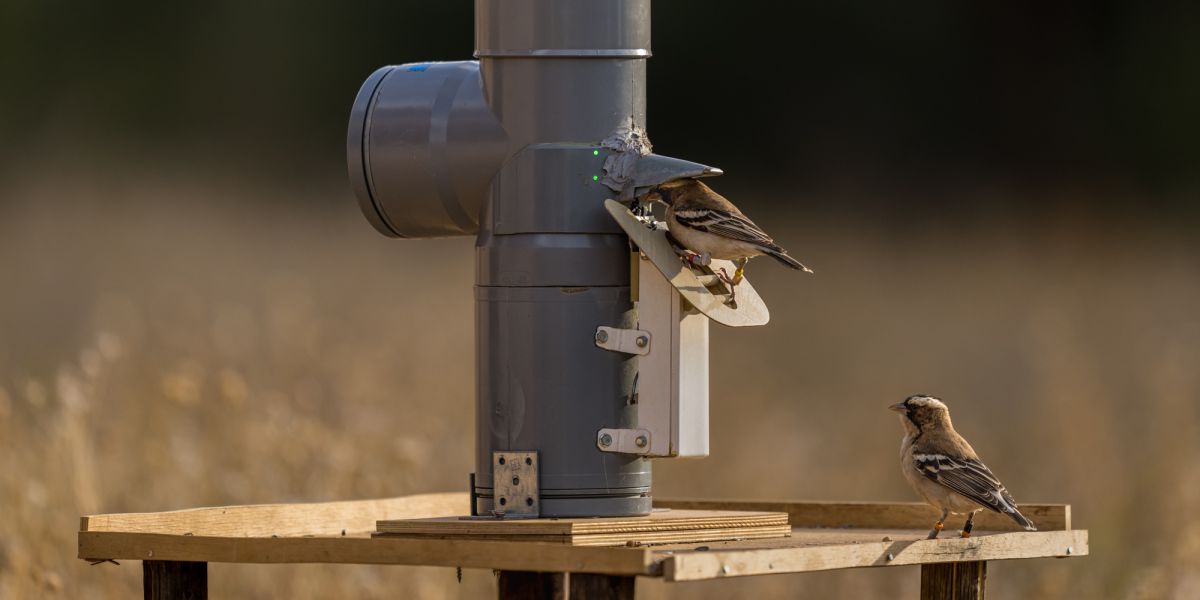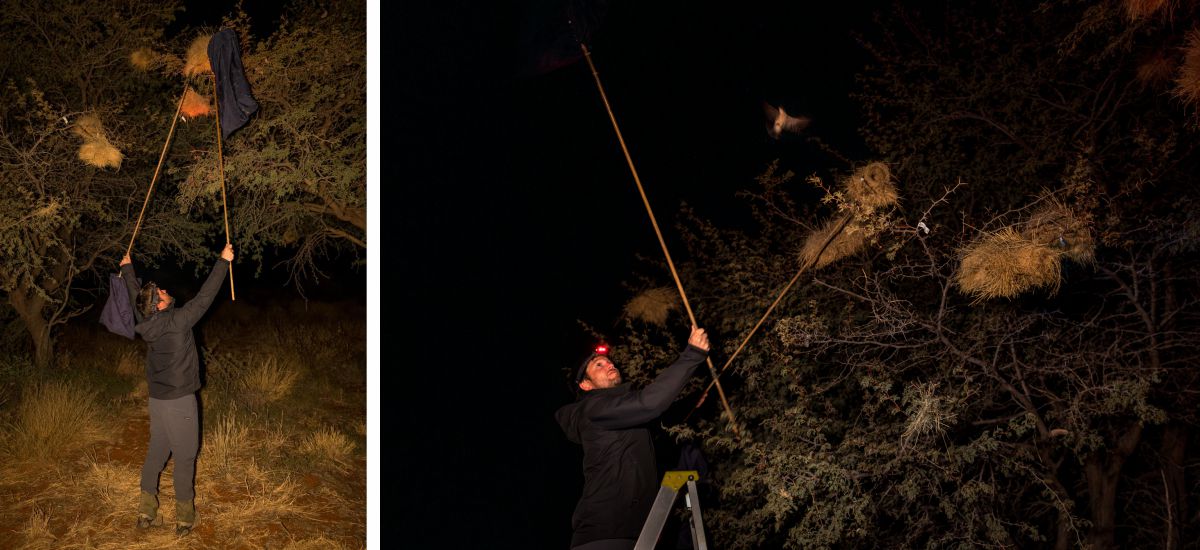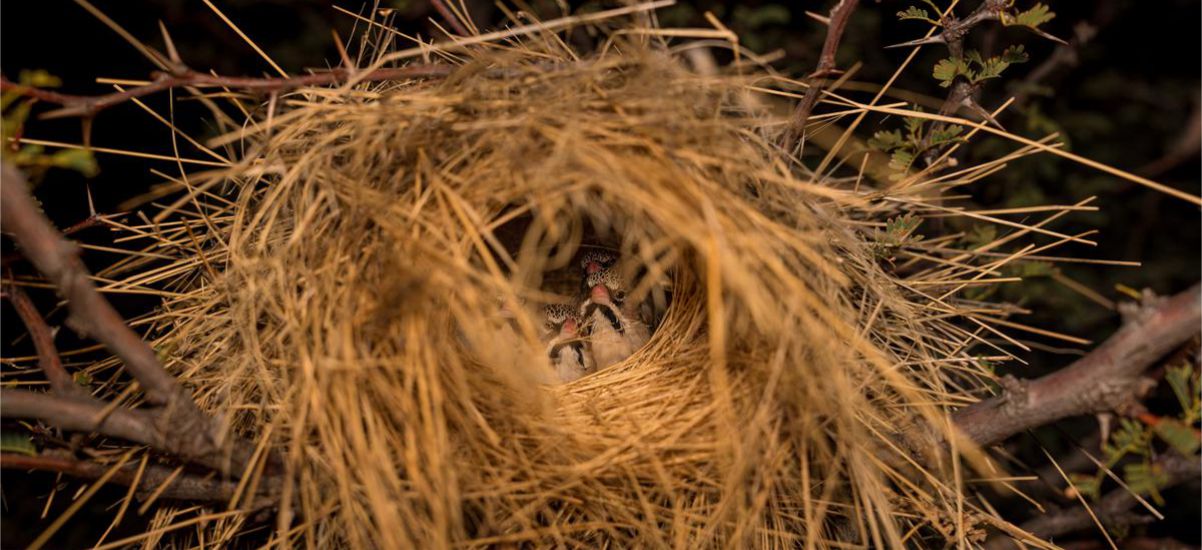INTRIGUING TRUTHS ABOUT WHITE-BROWED SPARROW WEAVERS
White-browed Sparrow Weavers (Plocepasser mahali) do not build impressive, neatly woven nests like most of the other weaver species. At first glance, it might seem far-fetched to think that there are important lessons we might be able to learn from these not especially colourful or, therefore, noticeable, sparrow-sized birds. But we shouldn’t be deceived by their somewhat unremarkable physical appearance or questionable nest-building skills. White-browed Sparrow Weavers have intricate social lives, help shape the environment around them, provide shelter for numerous other species, and can perform complex cognitive tasks.

Much of the early sparrow weaver research at Tswalu focused on their nests, which are unmistakable: bundles of dried grass and twigs dangling off the branches of camel thorn trees looking like particularly messy Christmas tree baubles. White-browed Sparrow Weavers live in cooperative family colonies of two to 14 birds. A dominant pair monopolises the breeding, while the rest of the family members act as helpers. The shape and apparent messiness of their nests can vary quite a bit, due to the fact that building techniques aren’t always the same and families tend to exhibit their own architectural styles.
Current research on the reserve is being led by doctors Ben Ashton and Inês Braga Gonçalves, who are looking to take our understanding of White-browed Sparrow Weavers quite a bit further.
“The main goal is to investigate one of the primary hypotheses of cognitive evolution, that the complexity of the social environment and the cognitive demands associated with that selects for greater intelligence,” Ben explains. In layman’s terms, this basically means that they are trying to answer the question: does having a rich social life make someone smarter? This hypothesis was initially developed with primates (including humans) in mind, but there is great interest in whether it would apply to birds.
To figure that out, or at the very least to establish whether there is a link between intelligence and social environment, the team needs to look at these factors separately. Using clever snack-providing contraptions, they are collecting data on how quickly individual birds learn the difference between a green light (which produces a yummy seed) and a red one (which doesn’t). Meanwhile, the birds’ social interactions are recorded. Once that’s done, comparisons can be made to see if there is a correlation between the number and duration of social interactions a bird has and the speed with which it figures out how to solve the cognitive task.

“This is going to take quite a while,” Ben admits. “So, in the meantime, we have a few smaller projects we’re working on, too.”
The one I join Ben and Inês for goes back to those iconic nests. A colony of White-browed Sparrow Weavers doesn’t have just one set of nests. Much as ground-dwelling animals sometimes make use of more than one burrow system, the weavers will construct nests in several different trees. The reasons are not fully understood but are most likely to do with vulnerability to adverse weather and predators.

It is dark and cold by the time we meet at one of the research sites. Equipped with lights, nets, and a ladder, Ben goes from nest to nest, checking on their inhabitants. At one point he waves me over and shines a weak, red light through the opening of one of the nests to reveal not a sparrow weaver, but an entire family of smaller birds. White-browed Sparrow Weavers, we are learning, are surprisingly gregarious, and don’t seem to mind sharing their nests with other species.
“We think this happens for the same reason as having nests in multiple trees: it provides extra protection against predators. These ones are Scaly-feathered Finches. They are the ones we see most often, but we have found nine different species roosting in sparrow weaver nests. Mostly finches, waxbills, and barbets. Sometimes even in the tree that’s currently being used by the weavers.”

It seems to be the case here, too, because the next nest Ben checks contains one of the weavers. Once caught, he gently hands it over to Inês. The birds have been marked with tiny rings around one leg and any information about which bird is seen using which nest might prove valuable. The bird is then put back into the same nest that it was collected from, both openings covered until they hear the bird settling down.
“We check their age and sex by the colour of their beaks,” Inês explains. “The rings are for identification, so if they don’t already have them, that’s the first thing we’ll do. Obviously, we try to process each bird as quickly as possible to minimise their stress and discomfort.”

Creating nests used by other species makes them what’s known as ecosystem engineers: organisms that transform their physical environments in a significant way. This is similar to aardvarks, whose burrows are used by warthogs, porcupines, hyenas and African wild dogs, or to elephants, hippos, or termites. Not bad, for a species that probably wouldn’t attract much attention if it wasn’t for those iconic nests.
Finally, are there any lessons we should draw from the willingness of weavers to share their homes with members of other species?
“Well,” Ben muses, “inter-species relationships like this provide important benefits to everyone involved, so perhaps it’s a good example to humans of why we should be more tolerant of our neighbours, too.”
Images by Marcus Westberg.

